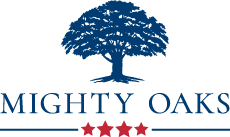Download The Truth About PTSd E-Book Here Free
Instead of wading through the mountain of valid research compiled on Post Traumatic Stress, the answer is found in understanding how we were created. There
You see, our brains and bodies are brilliantly designed to respond normally to the abnormal events of trauma, in order to survive and protect ourselves… that is not a disorder, but a blessing to embrace and be thankful for.
Join us as we embark on this journey to discover The Truth About PTSD.

The Facts about PTSD and Veteran Suicide
 Post-traumatic Stress can occur following a life-threatening event like military combat, natural disasters, terrorist incidents, serious accidents, or violent personal assaults like rape. … People who suffer from
Post-traumatic Stress can occur following a life-threatening event like military combat, natural disasters, terrorist incidents, serious accidents, or violent personal assaults like rape. … People who suffer from
(Excerpt from: The Truth About PTSD – CLICK HERE FOR FREE E-BOOK DOWNLOAD)
The physical changes that take place in the body and brain following trauma are beginning to be understood, but most treatments for these changes are still experimental. Generally,
- 70% of adults in the U.S. have experienced some type of traumatic event at least once in their lives.
- About 7 or 8 out of every 100 people (7-8% of the population) will have
PTSd - About 8 million adults have
PTSd during a given year. This is only a small portion of those who have gone througha trauma . - About 10 of every 100 women (10%) develop
PTSd sometime in their lives compared with about 4 of every 100 men (4%). - Women are nearly twice as likely to have
PTSd - The prevalence of
PTSd
One of the statements we make during the Mighty Oaks Program is that trauma is not a veteran issue; trauma is a life issue. While the data does indicate that combat veterans suffer from
As the study of both the physiological and biological impact of
And this is the problem. A medical community that is still working to get a firm grasp on how exactly to classify and deal with Post Traumatic Stress has declared that those who have it are broken. The word used is “disordered.”[ii] The implication: instead of
This is, to me, what makes our view of trauma so important. Instead of simply accepting the label that is put on those who have dealt with a traumatic event and are living life as a slave to that label and that diagnosis, understanding the practical implications of
[i] www.PTSd.va.gov
[ii] Diagnostic and Statistical Manual of Mental Disorders, Fifth Edition,2013 pp. 265
Current VA Findings on Veteran Suicide:
Findings show there is variability across the nation in the rates and numbers of deaths by suicide among Veterans. Overall, the Veteran rates mirror those of the general population in the geographic region, with the highest rates in Western states. While we see higher rates of suicide in some states with smaller populations, most Veteran suicides are still in the heaviest populated areas.
The suicide rate among
After adjusting for differences in age and sex,
At Mighty Oaks, we are committed to reducing Veteran suicides through our programs. We know that of the 20 suicides a day that we reported last year, 14 are not under VA care. This is a national public health issue that requires immediate action!
Veterans who are in crisis or having thoughts of suicide, and those who know a Veteran in crisis, can call the Veterans Crisis Line for confidential support 24 hours a day, seven days a week, 365 days a year. Call 800-273-8255 and press 1, chat online at VeteransCrisisLine.net/Chat, or text to 838255.


